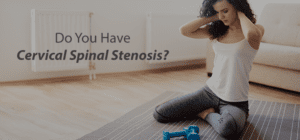
At Home Treatments for Tennis Elbow
What is Tennis Elbow? Tennis Elbow, also known as lateral epicondylitis, occurs when the tendons that connect the elbow to the muscles of the forearm suffer injury or wear and tear. NJ Spine and Ortho is here to help you understand this condition and your treatment options. Your elbow is a hinge joint. The strong bone of the humerus (or upper arm) meets with the more delicate bones of the forearm (i.e. the ulna and radius) to create the elbow. With the aid of tendons and muscles, your elbow can flex or extend the forearm. It can also rotate the radius to allow you to turn your hand palm-side up. The humerus also contains knuckle-like protrusions known as epicondyles. These bony knobs serve as points of attachment for the tendons that connect to the forearm muscles. If the tendons that attach to your lateral epicondyle rip, then tennis elbow is the result. If the tendons that fasten to your medial epicondyle tear, then doctors refer to this condition as golfer’s elbow. The primary difference between the two? With tennis elbow, the tendons that attach to your extensor muscles, like the Extensor Carpi Radialis Brevis (ECRB), suffer damage. With golfer’s elbow, the tendons that connect to your flexor muscles are the culprit. Tennis Elbow Resources What are the Symptoms of Tennis Elbow? Pain Management Tips for Treating Tennis Elbow at Home Exercises & Stretches for Tennis Elbow Contact a Board-Certified Orthopedist What are the Symptoms of Tennis Elbow? If you have tennis elbow, then you may notice the following symptoms: Pain on the outside of the arm, above the lateral epicondyle on the humerus Morning stiffness in the elbow, arm, or wrist Sore forearm muscles Loss of grip strength in the hands Difficulty rotating the radius (or forearm) Pain while straightening out the elbow, shaking hands, forming a first, or performing other movements associated with elbow extension or wrist rotation Do these symptoms sound like you? If you’re not a tennis player, then you might be surprised to find out that they do. However, athletes aren’t the only people who develop tennis elbow. Anyone who works in a field that relies heavily on elbow extension can experience this set of problems. In particular, plumbers, painters, chefs, butchers, and carpenters develop tennis elbow more often than members of the general population. Pain Management Tips for Treating Tennis Elbow at Home 90% of individuals who develop tennis elbow will be able to treat their condition successfully at home or using conservative treatments, like physical therapy. If you have a mild case of tennis elbow, then you can try these at home remedies: (Mostly) Natural Remedies for Tennis Elbow Try The “RICE” Method: RICE stands for Rest, Ice, Compression, & Elevation. When the inflammation of tennis elbow first arises, try to refrain from activities (like painting) that rely heavily on the use of the forearm muscles. Your doctor may even recommend that you wear a splint or brace to force immobilization of the

